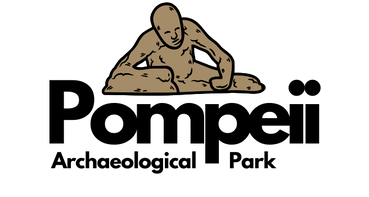Hercules in Herculaneum: Myth, Religion, and the City Named in His Honor
Table of Contents
A City in the Shadow of a Hero
Herculaneum may not attract the same fame as Pompeii, but it has something Pompeii never claimed: a name that belongs to a god. According to legend, Hercules himself stopped on this stretch of the Bay of Naples after one of his great labors and founded the settlement that became Herculaneum. To walk here is to enter a place where myth shaped identity from the very beginning.
The Myth of a Founder
The story goes back to Hercules’ tenth labor, when he stole the cattle of the giant Geryon in distant Spain. On his long journey home, he landed on the Campanian coast. Ancient writers like Dionysius of Halicarnassus tell us that he anchored his fleet here and founded a city, forever tying his name to the spot. Herculaneum literally means “place of Hercules,” a constant reminder that the town claimed a divine connection. This was more than a story—it was a declaration of heritage and pride.
Faith and Daily Life

The presence of Hercules in Herculaneum wasn’t confined to legend. His cult was woven into public life and celebrated in art. The most striking example is the College of the Augustales, where vivid frescoes showed Hercules welcomed to Olympus and battling the river-god Achelous. These weren’t small decorative touches. They dominated the hall, signaling the god’s central role in civic ritual.
Another fresco, found in a different public building, depicted Hercules discovering the infant Telephus, underscoring again the reverence he commanded. In Herculaneum, Hercules wasn’t an abstract figure—he was a living presence in paint, stone, and ceremony.
A Hero Across Cultures

Why Hercules? The answer lies in Campania’s diversity. Oscans, Greeks, Samnites, and Romans all left their mark here. Hercules—or Herakles to the Greeks—was one of the few figures who bridged these cultures. He was strong, resilient, and close to the gods, making him a unifying symbol for a community that wanted to project both power and belonging.
Even under Rome, Hercules remained central. His image stood comfortably alongside imperial cults, reminding everyone that local traditions and broader Roman values could exist side by side.
Herculaneum and Pompeii Compared

Pompeii also honored Hercules, with temples and graffiti to prove it. But in Pompeii, his role was one of many. Herculaneum, smaller and more contained, made Hercules its namesake. The city’s scale and elite character allowed his image to dominate public life more clearly than in the bustling, commercial sprawl of Pompeii.
Why the Story Still Resonates
Visitors today often focus on the villas, streets, and baths of Herculaneum, frozen by Vesuvius. But the myth of Hercules in Herculaneum adds another layer. The townspeople built their identity on a story of divine origin. They named their city after a god, painted his deeds across their walls, and carried his presence into daily rituals. To see the ruins without remembering this is to miss half the picture.
Hercules Remembered
From its very name to its surviving frescoes, Hercules in Herculaneum was never just a myth. He was the city’s founder, its protector, and its cultural ambassador. The ruins still carry traces of that devotion. Walk the site today, and you can almost sense the pride of a people who believed their town stood under the patronage of a hero-god.
